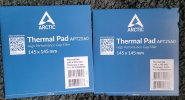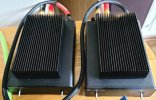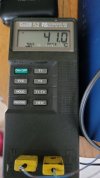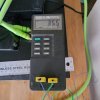"
The American Heritage Dictionary of the English Language identifies room temperature as around 20–22 °C (68–72 °F),
[1] while the
Oxford English Dictionary states that it is "conventionally taken as about 20 °C (68 °F)".
[2]"
That's a general consensus, from Wiki. I generally aim for 72-74 °F but, like I said, preferences vary. The point is that, these variations can and do affect the equipment temperature, and vice versa. If I turn on a just a few computers, my room temperature can rise by a few degrees. Class A amps, well, they are like heaters! So I don't think there is anything wrong with the OP's amps, it's all just physics (heat transfer).



